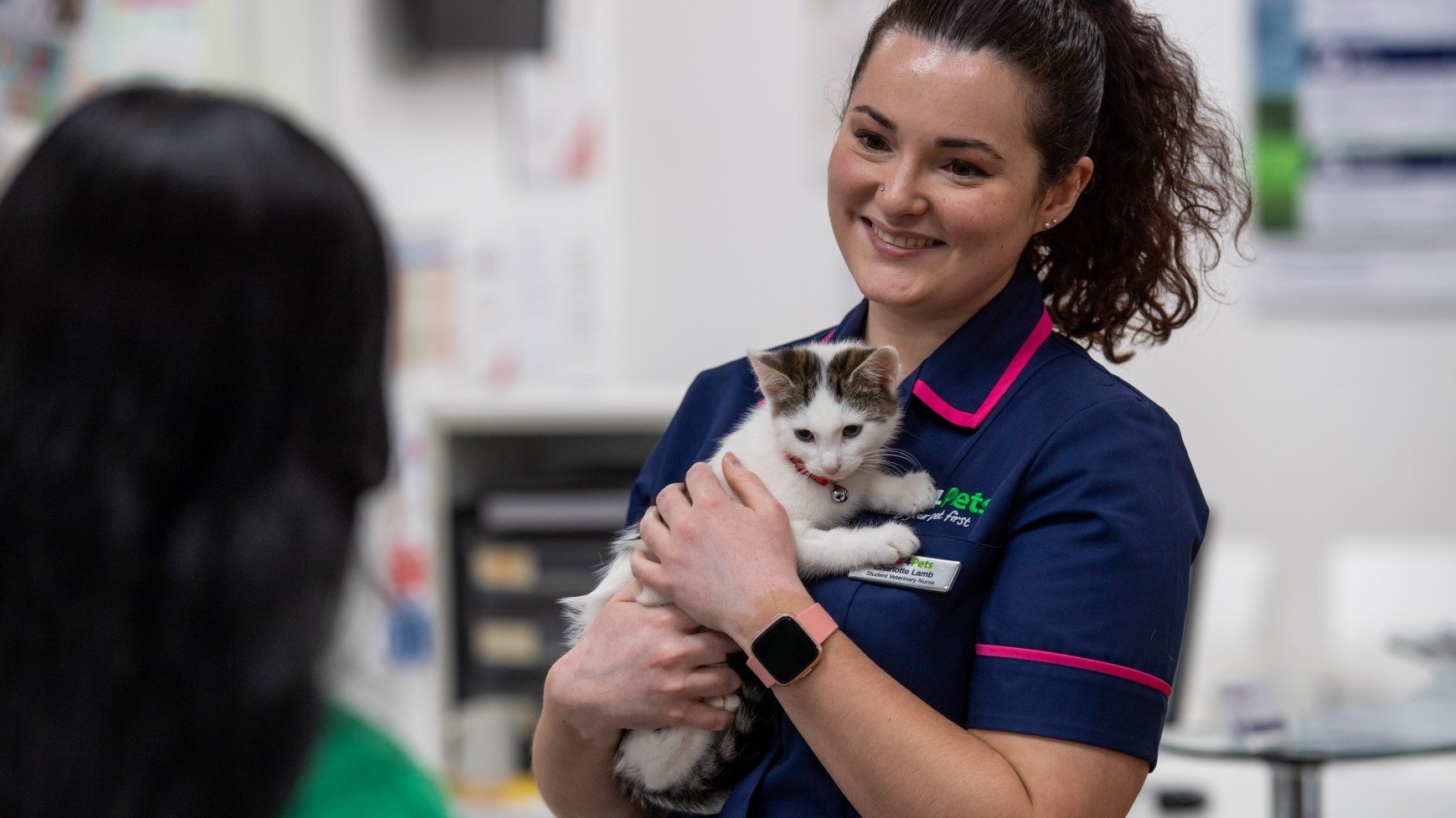
Introducing Cats
A happy cat leads to a happy home
Introducing a new cat to your home will be very different depending on if you already have a cat, or if you don’t, and if you are introducing a new cat to another cat or to a kitten. Making sure the needs of your cat or cats are all met, and that any relationships are harmonious, can be tricky but hard-work and effort early on will pay huge dividends.
A guide to bringing your cat home
How to introduce cats?
Cats are very territorial, and also stubborn – once your cat has decided it doesn’t like your new arrival it can be very difficult to change their mind. This means a slow, steady introduction is best, as this gives both cats a chance to get to know each other, and reduces the risk of your resident cat feeling threatened or ousted. There are some things to consider before you bring a new cat home:
- Personality clashes can be a really difficult problem to overcome. In general, kittens are easier to introduce to a home than a second adult cat, but this depends entirely on the personality of both cats. As kittens are sexually immature, they are generally seen as less of a threat to your established cat. For some older cats, however, the idea of a boisterous kitten might be far too much.
- One of the problems newly introduced cats can face is competition for resources – making sure both cats have access to everything they need from the outset can help both cats feel less defensive.
- Although bonded cats can do really well together, unsuitable pairings can be very difficult to manage. Sadly, even with the best preparation, two cats may simply not get along. Before you commit to getting another cat, take the time to think about if it is the right plan for your family. Once you have outfitted your home with everything you need to keep both cats happy, you can think about how to introduce the cats to each other.
Introducing cats to each other
- Set up your new kitten's or cat's own room, ideally one that your resident cat doesn’t use very often. This should have everything your new cat will need – don’t forget that cats don’t like to share! Your resident cat needs access to their own resources too, so you will need to get new equipment and toys for your new cat.
- Place pheromone diffusers around the house, but especially in the room your new cat will be, and your resident cat’s favourite room. These may provide a calming influence, as they release the ‘safe’ pheromone that cats use to reassure themselves.
- Keeping your resident cat’s routine as normal as possible in the run up to your new cat arriving, and once they are in the house, will help keep your cat calm.
- If possible, exchanging items such as bedding between your resident cat and your new cat before you bring your new cat home will help exchange scents ahead of a physical introduction.
When setting up to welcome your new kitten or cat, take a look at what's on offer from our friends in store.
When you are introducing a cat to a new home, keep them confined to the room you have set up for them.
Scent is really important to cats, so ‘scent-swapping’ is a great tip when introducing two cats before you let them see each other. Scent-swapping involves mixing your resident cat's and your new cat’s smells around the house, to normalise them.
Scent-swapping can be done by:
- Exchanging bedding.
- Stroking one cat and then the other.
- Wiping a soft cloth around one of the cat’s faces, and wiping the cloth on furniture in your other cat’s ‘area’, and then vice versa.
- Allowing cats to explore each other’s area supervised, when the other cat is elsewhere.
Although we cannot experience these scents ourselves, they can have a powerful impact on cats and the importance of scent swapping shouldn’t be underestimated. Just doing scent-swapping can take several days, or even up to a week.
Visual contact should be made through a barrier at first – for two adult cats a tall stair-gate can provide a good option, or for kittens keeping the kitten in their dog crate works well so long as they have somewhere to hide if they feel threatened.
Both cats should always have the choice to retreat or hide if they need to, and interaction should never be forced. Let the cats meet in their own time, and don’t pick them up or move them closer together.
Feeding both cats something tasty while they are in proximity can give a positive association with meeting, so long as the bowls are far enough apart for the cats not to feel uncomfortable.
If either cat appears scared or aggressive, gently remove the contact, continue scent-swapping, and try again the next day. Patience is key, and you should find that eventually tolerance will build up between the cats, until they feel confident enough to sniff each other through the barrier.
Once your cats seem comfortable with each other, you can let your new cat into the rest of the house.
Making sure they both know where their resources are, and making sure adult cats have somewhere they can get space, will all help with a smooth integration into a multi-cat household.
Health Plans to keep your cat healthy
At Vets4Pets we offer a range of Health Plans that make essential routine treatments more affordable. You'll save money on things like annual vaccinations, flea and worm treatment and routine health check-ups.

Cat Advice
Read more of our expert cat advice to keep your cat happy and healthy.
